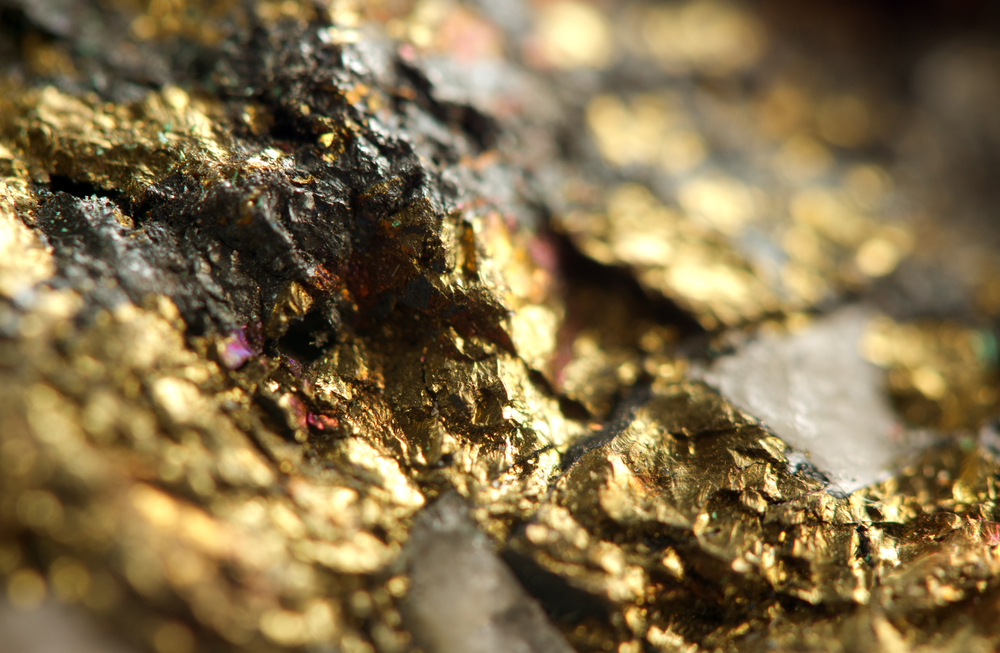Oct 29 2015
MONARQUES GOLD CORP. is pleased to report the first results from Phase III of the 2015 drilling program at its Croinor Gold project, approximately 70 kilometres east of Val-d'Or, Quebec.

assistant | Shutterstock
As stated at the beginning of this year, Phase III (see map of drill holes) involved the exploration of promising targets near the main zone of the deposit.
Hole CR-15-463 intersected a 6-metre zone (core length) near surface (at a vertical depth of approximately 13 metres) containing 40% slightly mineralized quartz-carbonate-tourmaline veins in an altered felsic intrusive (QFP). Several grains of visible gold (see photo of visible gold) were seen within the zone, which assayed an average of 236.47 g/t Au (227.9 g / t and 245.05 g/t) over a 1-metre (17 to 18 m) core length (CL). The sample was assayed twice using the gravity method. Farther down the same hole (at a vertical depth of approximately 35 metres), another intersection returned 4.56 g/t Au over a 1-metre CL (45 to 46 m) in a similar quartz zone. The true width cannot be determined from the available information. These intersections lie between the Bug Lake and Trench #2 showings, in an area where no other information is available within a radius of 60 metres or at depth.
"We are delighted with these new exploratory results," said Jean-Marc Lacoste, President and Chief Executive Officer of Monarques, "as they once again confirm the high gold potential outside and around the main Croinor deposit. We will be coming out with a new NI43-101 resource estimate in the coming weeks."
Hole CR-15-468 targeted at a depth of 30 metres below the continuity of a quartz zone intersected in the historic hole LB-07-05 (6.14 g/t Au over 6 metres CL) which was found in the 2007 drill campaign at a depth of approximately 88 metres below surface. The targeted zone was intersected as expected and returned 1.80 g/t Au over 4.23 metres CL. This zone is open at depth.
Holes CR-15-456 to CR-15-462, CR-15-464 and CR-15-467 provided valuable information for the understanding of how the two showings (Bug Lake - Trench #2) are related, but did not yield significant results.
Holes CR-15-465 and CR-15-466 were planned to verify 2 geophysics targets. They intersected some weakly mineralized zones without significant results.
The drilling program, initially planned to be 3,000 metres, ended on October 13 with a total of 3,439.5 metres drilled (13 holes). The program was aimed at testing some of the targets identified by the two geophysical surveys conducted earlier in the year, as well as targets generated by the compilation of data for the areas around the Bug Lake and Trench #2 showings.
The technical and scientific content of this press release has been reviewed and approved by Valère Larouche, the Corporation's Chief Geologist and its Qualified Person under National Instrument 43-101.
Sampling normally consisted of sawing the core into two equal halves along its main axis and shipping one of the halves to Techni-Lab S.G.B. Abitibi Inc. in Val-d'Or for assaying. The samples are crushed, pulverized and assayed by fire assay with atomic absorption finish. Results exceeding 3.0 g/t are re-assayed using the gravity method. Samples containing gold grains are assayed using the metallic sieve method at the Techni-Lab laboratory in Ste-Germaine-Boulé. Monarques has established a full QA/QC protocol, including the insertion of standards, blanks and duplicates.